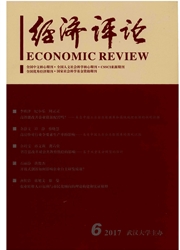

 中文摘要:
中文摘要:
2007年爆发的金融危机中,信用违约互换蕴含的道德风险使其成为危机发生和发展的助推器。本文通过构建信用违约互换交易的合约设计模型,研究该产品的作用以及控制其道德风险的最优合约设计。分析发现:交易双方资金成本差异决定了信用违约互换具有优化配置信用风险、提高银行收益和拓宽市场主体投资渠道等有利作用,但信用违约互换交易会降低银行监督信贷资产的努力水平,导致信用风险积聚和增加。通过引入不完全保护机制,我们给出了有效控制信用违约互换道德风险的最优合约。本文的研究结论为防范和控制信用衍生品隐含的道德风险提供了借鉴,有利于促进其发挥分散信用风险等积极作用。
 英文摘要:
英文摘要:
During the 2007 financial crisis,the implied moral hazard of credit derivatives made them the roll boosters of the crisis.We develop a contract design model on credit default swap transaction to investigate the function of the instrument and the optimal contract aiming to control the moral hazard.The results show that:the difference in fund cost between both transaction counterparties determines the benefits of credit default swap transaction,which include optimal allocation of the credit risk,improvement of the bank’s return and expansion of the investment object.However,the credit default swap transaction reduces the bank’s efforts of monitoring credit assets,which accumulates and increases credit risks.By introducing the partial protection mechanism,we obtain an optimal contract which could effectively control the moral hazard.This article can be a reference to control the accompanying risks of credit derivatives and would be helpful to promote their positive functions such as risk sharing.
 同期刊论文项目
同期刊论文项目
 同项目期刊论文
同项目期刊论文
 期刊信息
期刊信息
